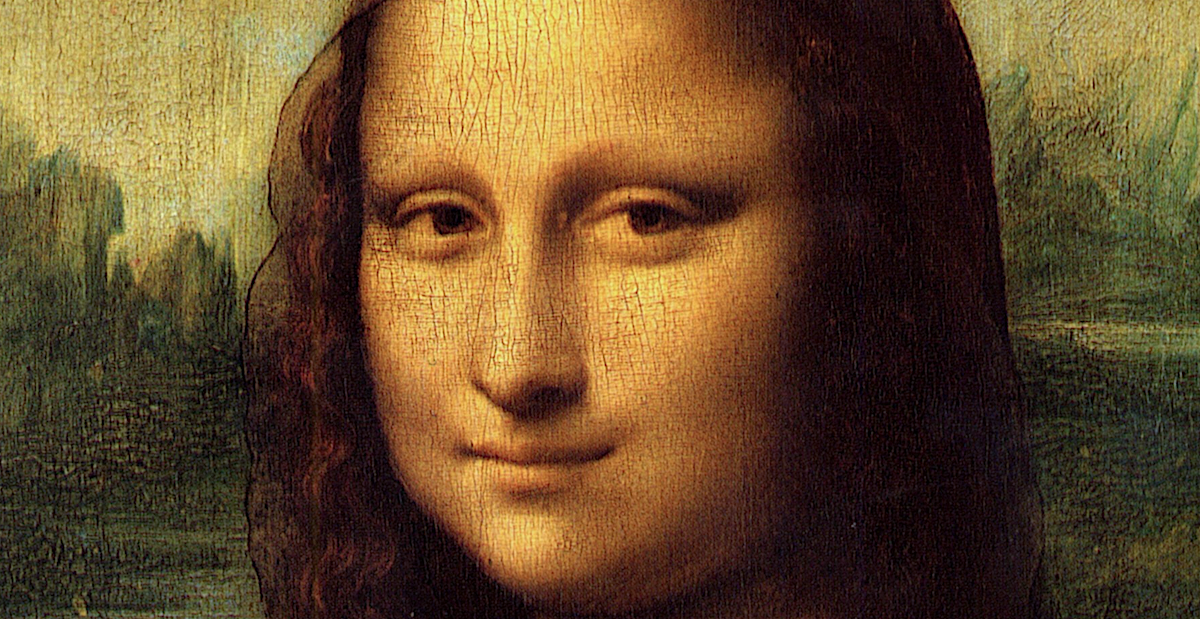Have you ever dwelled on something that initially appears full of complex meaning, and gone around and around on it until it appears to have absolutely zero meaning whatever? One of the points of art historical researching – and a crucial factor in how funds should be distributed (I say “should”, not “are”) – is to enable areas which have hitherto been unexplored to be investigated. Italian ‘art detective’ (I wonder if reporters have adopted this moniker instead of ‘art historian’ deliberately to pre-empt my eye-rolling) Silvano Vinceti has decided to scrutinize the already overly-scrutinized Mona Lisa, proclaiming that the strange visage is an amalgamation of Lisa Gherardini, the wife of a Tuscan merchant, and Gian Giacomo Caprotti, Leonardo da Vinci’s male apprentice and probable gay lover.
This is certainly aiming for the Dan Brown effect, surely; take an overly familiar icon of art history, certain to be instantly recognizable to as wide an audience as possible, the slap on a juicy old conspiracy theory. Surely there are more fascinatingly stranger than true stories about the millions of other artworks populating our museums. And even then does it really take a purported revelation of homosexuality to rouse our curiosity? Surely we are beyond such rubbernecking? The identity of the Mona Lisa is still being debated, tiresomely; I really couldn’t care less who the sitter was, nor whether an artist swung both ways. So many other paintings are far more worthy of our interest and attention.
Speaking of over-exposed artists, an exhibition of Francis Bacon opened in London last week revisits a contended collection of drawings supposedly given by him to Italian journalist Cristiano Locatelli Ravarino, in 1989. Famous for not doing drawings, I find it difficult to believe that he would have completed any, given his ruthless self-editing by destroying below-par works, let alone large-scale ones. That they are not included in the official Bacon catalogue raisonné should confirm it for most. Yet the lure of not knowing is compelling, and it seems people are willing to suspend disbelief if they think they’re bagging a bargain in the long run. I say stay well away: for this is part of a much wider problem of a market filled with less than authentic works.
Take a look at the link below to see several apparently real works sold by Miami Auction house in April, for startlingly bargain-basement prices. With no provenance, other than the line ‘private collection’ and a wobbly looking – but prominent – signature, it is worrying that they’ve been snapped up by buyers who in all honesty should know better. A thousand dollars for a Bacon drawing? The price tag alone should tell you all you need to know: slapping on a huge premium would at least show the house had some conviction in its authenticity. This is an extremely worrying trend.

